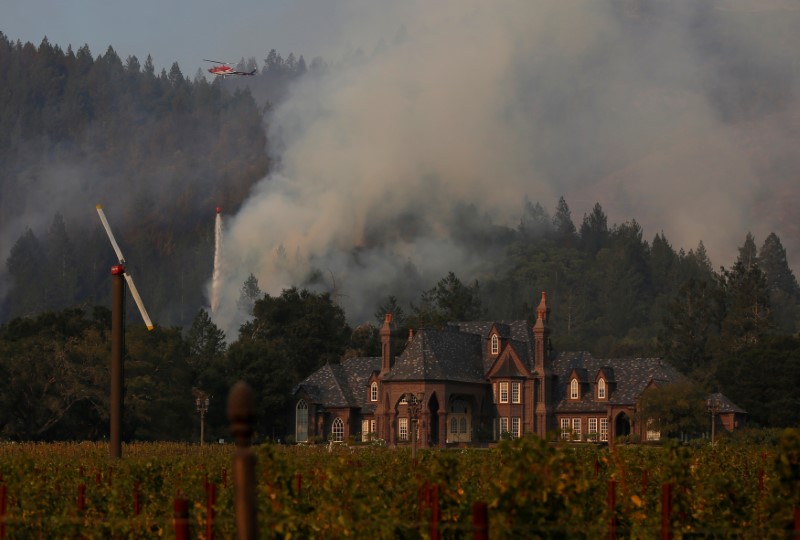
By Adrees Latif and Jonathan Allen
SANTA ROSA, Calif. (Reuters) – A wildfire in northern California’s Napa Valley wine country more than quadrupled in size overnight to some 11,000 acres (4,450 hectares), burning homes and vineyards and forcing officials to order thousands of residents to evacuate on Monday.
As the small city of Santa Rosa emptied out around him, Jas Sihota stationed himself on his front porch with his garden hose close at hand, darting out every 15 minutes or so to douse spot fires around neighboring houses seeded by wind-blown embers under a hazy red sun.
Sihota, a radiology technician at a nearby hospital, had not slept in some 24 hours since the blaze, since named the Glass Fire, ignited on Sunday morning near Calistoga about 60 miles (96.5 km) north of San Francisco.
“I wouldn’t have a house if I didn’t stay,” said Sihota, adding that neither would some of his neighbors. At least 10 homes elsewhere on the street beyond the reach of his hose were destroyed.
He weighed when he might finally grab some sleep, wondering if he could stay up perhaps another six hours on adrenaline. “I’m not going to do it till I feel comfortable,” he said.
It was the latest inferno in a historically destructive year throughout the U.S. West. In California alone, wildfires so far have scorched more than 3.7 million acres, far exceeding any single year in state history.
Since Aug. 15, fires in the state have killed 26 people and destroyed more than 7,000 structures. Climate change has contributed to wildfires’ growing intensity, scientists say.
Early on Monday, new evacuation orders were issued in Sonoma and Napa counties, including parts of the cities of Santa Rosa and St. Helena.
Residents at Oakmont Gardens, a retirement community in Santa Rosa, leaned on walkers as they waited to board a bus taking them to safety, their face masks doubling as protection against smoke and the novel coronavirus.
More than a thousand firefighters are battling the Glass Fire, according to the California Department of Forestry and Fire Protection (Cal Fire), some in planes that trailed red plumes of fire retardant over the region’s famed vineyards. None of it had been contained as of Monday morning, said Cal Fire, which was also monitoring 26 other major wildfires in the state.
The National Weather Service has issued a Red Flag Warning through to the end of Monday, forecasting low humidity and gusts of wind up to 55 miles per hour (89 km per hour) through certain canyons. The fire also prompted evacuation of the 151-bed Adventist Health St. Helena hospital on Sunday for a second time in recent weeks after lightning-sparked blazes swept through the area in August.
(Reporting by Adrees Latif in Santa Rosa and Jonathan Allen in New York; Additional reporting by Stephen Lam in Santa Rosa and Steve Gorman in Los Angeles; Editing by David Gregorio and Bill Berkrot)





